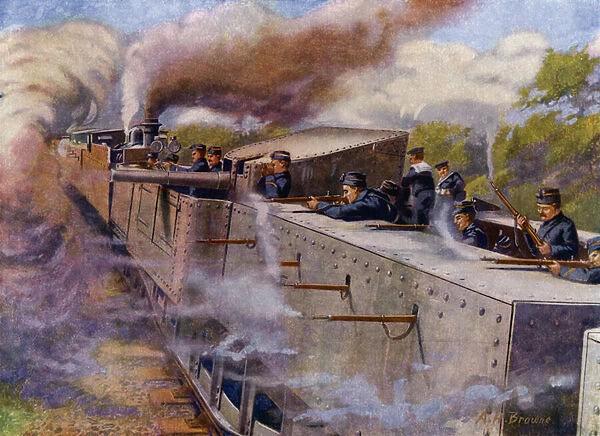When Modern Art Was Fascist
 |
| Gino Severini, Armored Train in Action, 1915. Museum of Modern Art, New York |
Italian Futurism is the most problematic of modern art's -isms. Its artists embraced Fascism, ultraviolence, and the military-industrial complex, sometimes taking them as subjects of their art. Declared Filippo Tommaso Marinetti's Futurist Manifesto: "Art, in fact, can be nothing but violence, cruelty, and injustice."
Futurist art itself is thoroughly progressive, with affinities to Cubism and Orphism. There aren't any major Futurist paintings or sculptures in L.A. collections, but a great one is currently on loan to LACMA. Gino Severini's Armored Train in Action, owned by the Museum of Modern Art, is in "Imagined Fronts: The Great War and Global Media" (Resnick Pavilion through July 7, 2024).
Severini spent the war in Paris. His studio's overhead view of martial formations must have informed his painting. Yet it's based rather closely on a 1915 news photograph. An English war artist's view of a Belgian armored train gives a better idea of the subject. The armored train was a battleship on rails.
 |
| Unknown English artist, 1915 lithograph |
Marinetti hoped to make Futurism the official art of the fascist state. Benito Mussolini apparently wasn't that crazy about Futurism, even as some artists glorified his likeness. However, Mussolini declined Nazi Germany's offer to tour its "Degenerate Art" exhibition—which included Futurism as a threat to Aryan values.
Comments
Granted, Futurism emerged from the proto-fascist ooze, but what about the other great movements, such as Cubism and Fauvism, as but examples? Not a fascist whiff there, or am I missing something?
And Futurism itself has managed, by virtue of its beauty and dynamism, in time to shed its fascist ethic.
"There ought to be an absolute dictatorship... a dictatorship of painters... a dictatorship of one painter... to suppress all those who have betrayed us."
Pablo Picasso